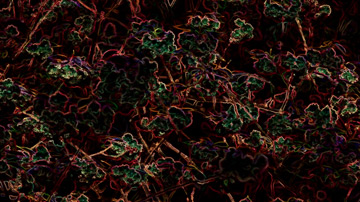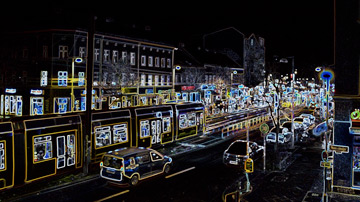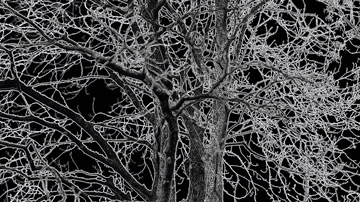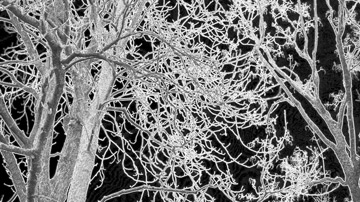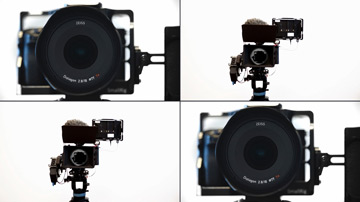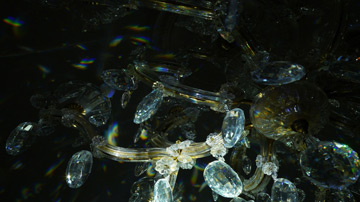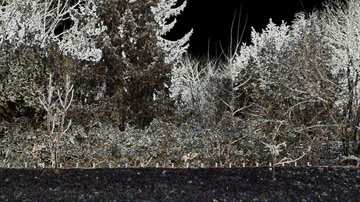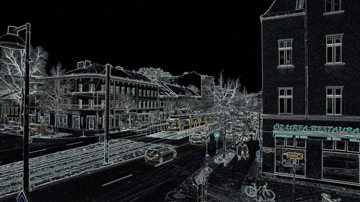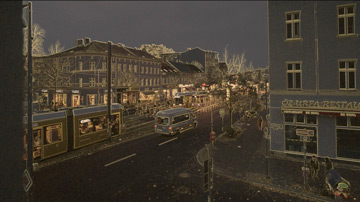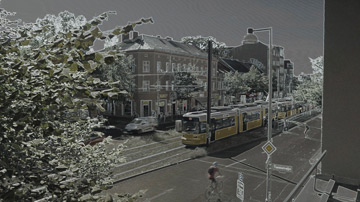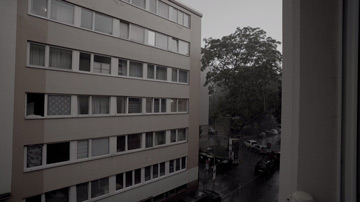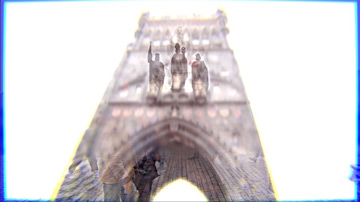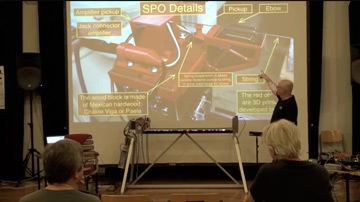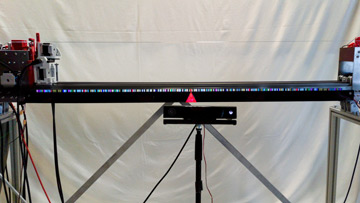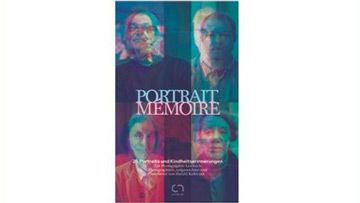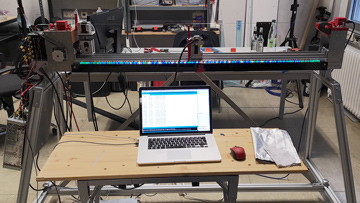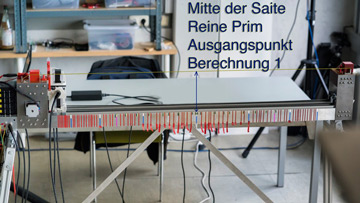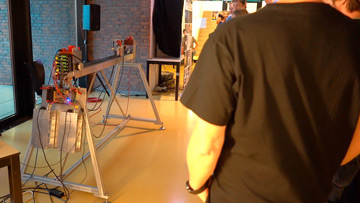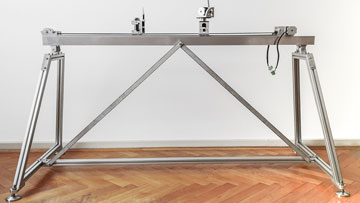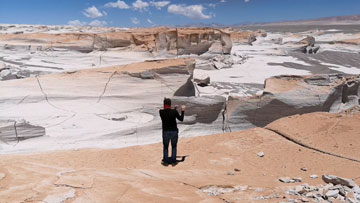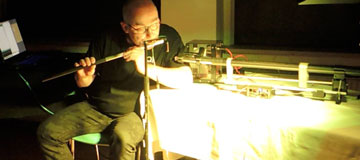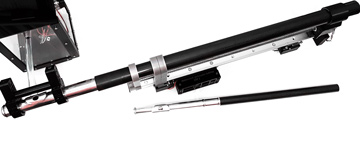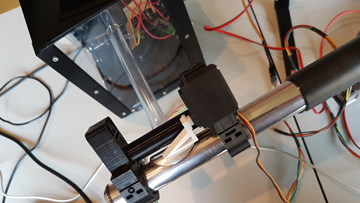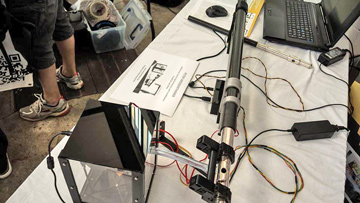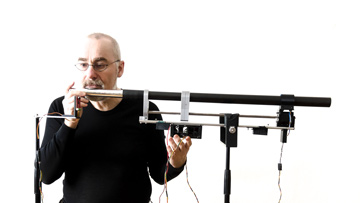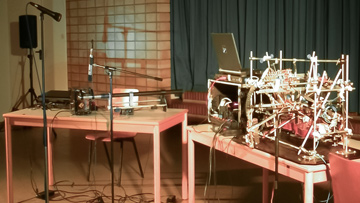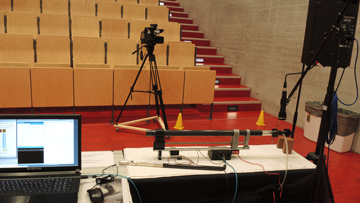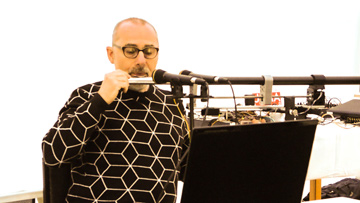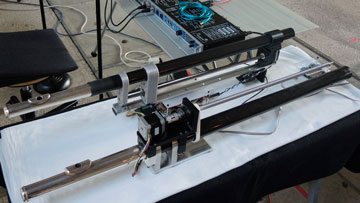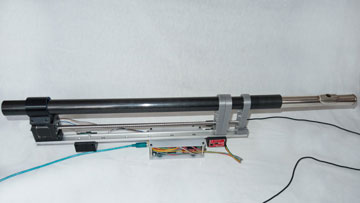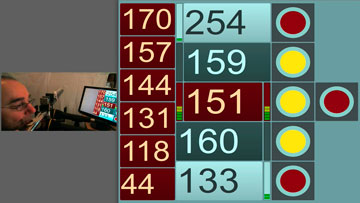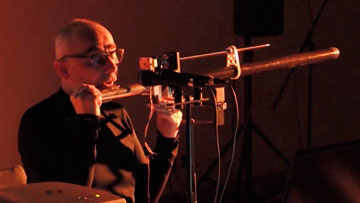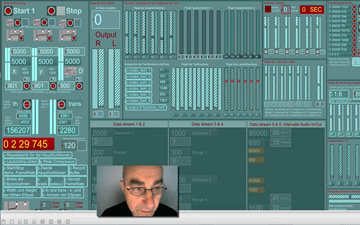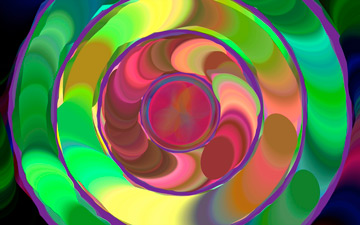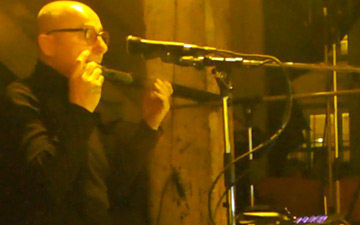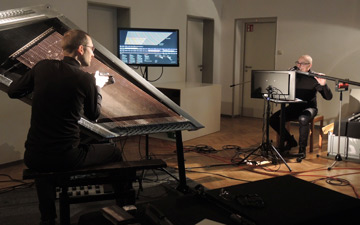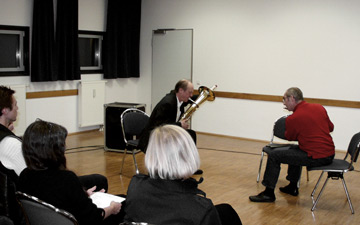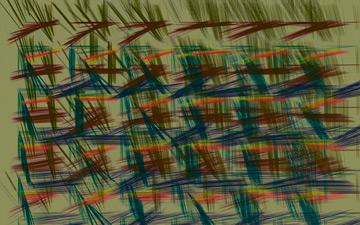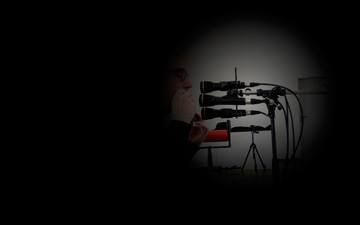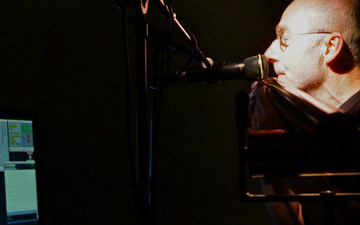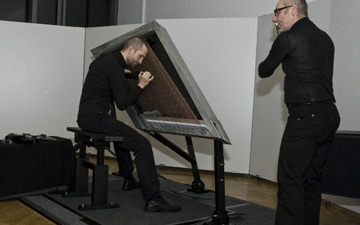Peter Wiessenthaner
composer. audio-visuell live-elektronic concertperformances
Facebook
YouTube
No notes. Criteria for in- and exclusion determine the play, define the frame,
allow for the unforeseeable. At the moment of play the composition is found.
Elements of colour and picturesare put in relation.
Founder and curator of SKOP: www.skop-ffm.de
Stations since 1982
deutsch - espaĖol
Copyright by Peter Wiessenthaner
Buy film or audio file here
January 12, 2025 - Start of discussions with ChatGPT about the development of a tone theory.
As of today, March 31, I have had a total of 8 conversations with ChatGPT. Here are the links to the conversations in text form so far:
https://www.skop-ffm.de/movies/10_Gespreach_mit_ChatGPT_2025_Mai_03_englisch.pdf
https://www.skop-ffm.de/movies/10_Gespraech_mit_ChatGPT_2025_Mai_03_spanisch.pdf
https://www.skop-ffm.de/movies/10_Gespraech_mit_ChatGPT_2025_Mai_03_chinesisch.pdf
https://www.skop-ffm.de/movies/10.Gespraech_mit_ChatGPT_2025_Mai_03_deutsch.pdf
https://www.skop-ffm.de/movies/9_Gespraech_deutsch_Teil_2.pdf
https://www.skop-ffm.de/movies/9_Gespraech_englisch_Teil_2.pdf
https://www.skop-ffm.de/movies/9_Gespraech_spanisch_Teil_2.pdf
https://www.skop-ffm.de/movies/9_Gespraech_chinesisch_Teil_2.pdf
https://www.skop-ffm.de/movies/Gespraech_8_mit_ChatGPT_ueber_Tongestaltung.pdf
https://www.skop-ffm.de/movies/Englisch_Discussion_8_with_ChatGPT_about_sound_in_composition.pdf
https://www.skop-ffm.de/movies/8_conversación_con_ChatGPT_sobre_la_configuración_del_sonido.pdf
https://www.skop-ffm.de/movies/Gespraech_8_mit_ChatGPT_ueber_Tongestaltung_in_der_Komposition_chinesisch.pdf
https://www.skop-ffm.de/movies/7_Konversation_Ueber_Konsonanz_und_Dissonanz_deutsch.pdf
https://www.skop-ffm.de/movies/7_Conversation_about_consonances_and_dissonaces_englisch.pdf
https://www.skop-ffm.de/movies/Conversación_7_Peter_Wiessenthaner_con_ChatGPT_sobre_disonancias_y_consonancias.pdf
https://www.skop-ffm.de/movies/Conversation_7_withChatGPT_about_consonance_and_dissonance_Chinese.pdf
https://www.skop-ffm.de/movies/6_Spektralisten_und_Mikrotonaltitaet.pdf
https://www.skop-ffm.de/movies/6_Microtonality_spectralists_pure_consonancest_englisch.pdf
https://www.skop-ffm.de/movies/6_Microtonalidad_especialistas_en_espectro_consonancias_puras_spanisch.pdf
https://www.skop-ffm.de/movies/6_Microtonality_spectralists_pure_consonancest_chinesisch.pdf
https://www.skop-ffm.de/movies/5_Gespraech_mit_ChatGPT_deutsch.pdf
https://www.skop-ffm.de/movies/5_Conversation_with_ChatGPT_englisch.pdf
https://www.skop-ffm.de/movies/5_Conversación_con_ChatGPT_en_espaĖol.pdf
https://www.skop-ffm.de/movies/5_Conversation_with_ChatGPT_chinese.pdf
These 4 conversations are included in one PDF with all translations. In the following PDFs, the translations are separated, each PDF contains only one language. For a reader of the texts, the division into separate texts per language has proven to be easier for reading.
https://www.skop-ffm.de/movies/1_Was_weiss_ChatGBT_zu_Reinen_Konsonanten.pdf
https://www.skop-ffm.de/movies/3_Reine_Konsonanzen_ChatGBT_3.pdf
https://www.skop-ffm.de/movies/2_Reine_Konsonanzen_Gespraech_mit_chatGBT.pdf
https://www.skop-ffm.de/movies/4_Wiessenthaner_ChatGPT.pdf
To the texts - Image
Why am I “talking” to ChatGPT? For many years I have had the impression that the public discussion is not or is little about sound theory.
In Frankfurt, I cannot find any musicians who are interested in sound theory. Maybe I'm wrong.
With ChatGPT, I have the opportunity to encounter profound knowledge and discuss it. I ask you to overlook the affirmative in ChatGPT's answers and to focus on the factual content of ChatGPT's statements.
I have reviewed all the texts and checked for “hallucinations” by ChatGPT. I have corrected what I considered to be false statements.
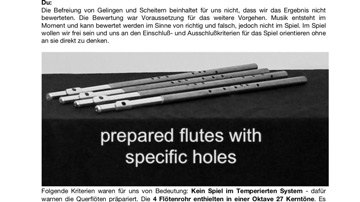
March 15, 2025 - Next film about Antonplatz in Berlin, slow motion 22
Film shots were taken from various perspectives around Antonplatz in Berlin. In a “Before start”, with 2-second takes, perspectives are presented that are elaborated on in the rest of the film. An interview with a vendor at the Anton market plays a certain role, as do the film scenes. The interview is determined by the statements of the market vendor and by the alternation between slow motion and normal motion. Sections in the movie that want to show the special situation at Anton-Platz and that gain more meaning through the interview. The movie contains watermarks. You can purchase the version without watermarks for a fee.
Here the link to the film:
Link to the film:
https://www.skop-ffm.de/movies/22_Slow_motion_Berlin_Antonplatz.mp4
Buy film without watermarks or audio file here
Antonplatz Berlin - Link to the Film
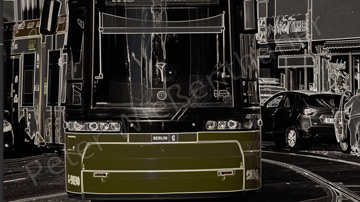
February 7, 2025 - Behind the window, slow motion 20
Shooting a facade for 13 seconds at 100 fps in a movie is actually pointless. And in slow motion too. The lack of movement in the image is countered by movement in the picture. Does that make something clear? The movie is 3 minutes and 21 seconds long.
Link to the film:
https://www.skop-ffm.de/movies/Slow_motion_20_behind_the_window.mp4
Buy film without watermarks or audio file here
Link to the film
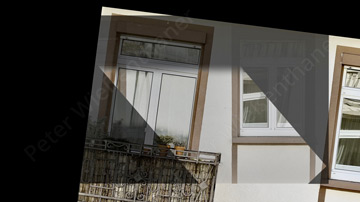
February 6, 2025 - Pythagoras, the Pure Consonances and Micro-Intervals
The text was not created using ChatGPT.
If the semitone is described as 12√2, then the distance from semitone to semitone is the same, with the value of 1.0494630943593. If we want to calculate the perfect fifth, then the formula is 12√2 to the power of 7 = 12√128. From this we can already see that it can no longer be a pure consonance or a perfect fifth. The result is incommensurable, immeasurable. In any case, the calculation 12√2 shows that the distance from semitone to semitone is, in principle, the same, with the pure consonances subtending.... more here:
Link to the film:
https://www.skop-ffm.de/movies/Pythagoras_and_the_consequences.pdf
Buy film without watermarks or audio file here
With the SPO, all intervals are calculated - Link to PDF
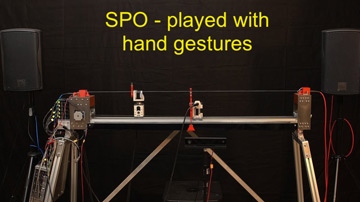
January 22, 2025 - Fire, slowmotion 20
A fireplace can be seen on 4 different film recordings. The length varies from 31 sec. to 61 sec. I also recorded four different audio tracks.
Visually, you can hear the sizzling flames, acoustically the crackling of the wood logs.
Slow motion ultimately resulted in a movie of 13:16 min. The individual shots are blended together and heavily edited in terms of color, with the background removed.
The crackling of the burning wood is also heavily edited, the crackling emphasized. The sound of the wind in the fireplace has been reduced in volume, altered in various frequency ranges and rearranged.
Link to the film:
https://www.skop-ffm.de/movies/fire_slow_motion_20_.mp4
Buy film without watermarks or audio file here
Fire - Link to the Film

January 19, 2025 - Storm, slow motion 19
4 takes from 1 min. to 1 1/2 min. recorded. It was a storm on January 1, 2025. The contrast between slow motion and real time is thematized here. The result is a short movie. 13 min. and 40 sec. long.
Link to the film:
https://www.skop-ffm.de/movies/slow_motion_19_storm_2025.mp4
Buy film without watermarks or audio file here
Storm - Link to the Film

15th of December 2024 - "Messages of a Centenarian" has been completed.
The 1st part of 4 parts of “Messages of a Centenarian” has been completed. Further interviews for the next parts will be filmed at the beginning of January 2025. The 1st part was shown privately within the family circle on the occasion of his 100th birthday on December 6, 2024. The film was very well received and the “centenarian” was delighted with the performance.
The 1st part has a length of 45 minutes. A trailer is in preparation.
Messages of a Centenarian - Image
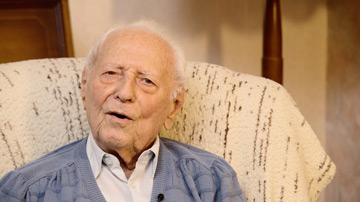
06th of october - Behind the window, tour of the port of Bremen
I drive past different ships in a ship. In the ship I'm sitting in, a man from the shipping company is explaining the environment in the harbor. Only the movement of the water shows that this is a slow motion shot. The talking in the ship and the various noises form the source material for the film's sound. In different pitch transformations, pure fourths, pure fifths and pure octaves can be heard, which are layered into new sound images in several octaves.Video
Behind the window, tour of the port of Bremen - Video
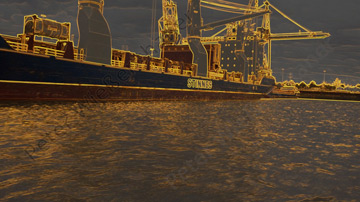
06th of October 2024 - SPO, finish the programing
There are two exponential equations that determine positions for the motors, related to the speed, acceleration and braking of the motors. This makes it possible to bring the string divider motor to a standstill with a minimal movement of the hand. This makes it possible to transition from a fast, long drive to a slow, short drive. This makes it easy for a player to move to exactly one position with the string divider and trigger an action there. This completes the programming for this play variant of the SPO.t die Programmierung fuer diese Spiel-Variante des SPO beendet.
Image
SPO, finish the programing, Image
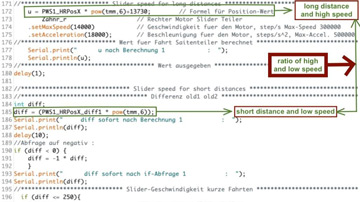
11th of April 2024 - Behind the window, slowmotion 17
I'm behind the window of the hotel and filmed streets in Bremen. Top down. It could be in any city. Symbolic outlines of everything that can be seen in the film. The colorfulness and slow motion can increase attention to show the everydayness of the images. The noises inside the window were changed in height and extent. Perfect fourths, perfect fifths and perfect octaves fill several octaves. It could also be the noises from outside. They differ only slightly after the various processing operations. The duration of the film is perhaps 6 min.
Video
Behind the window, slowmotion 17, Video
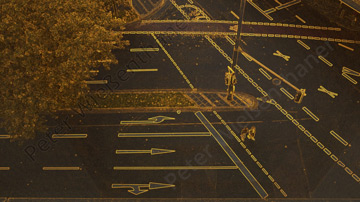
01th of October 2024 - Behind the window, slowmotion 16
There is no more movement to be seen, except for a slight noise in the window with the plants in front of it. This is also how a viewer who looks out the windows of my apartment sees it. However, without noise, bright and clear and without movement. There could also be photos that were animated here. But the 100 fps offers a smooth, short film with some noise in the window. When I look through the windows, at the windows opposite, I don't hear anything that belongs to the building.
The film is 43 seconds long, the opening and closing credits are 54 seconds long.
The cost for the film without watermark is 15 euros.
Video
Behind the window, slowmotion 16, Video
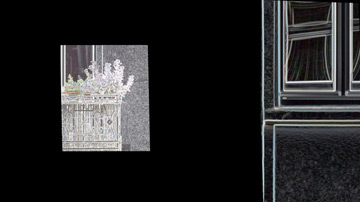
09th of September 2024 - Behind the window, slowmotion 15
Behind the window is inherently ambiguous. It can be understood as something that takes place behind the window in the room or behind the window outside a building. A short film shows the inside in brief outlines and clearly more of the outside. Both take up little space on the screen. The leaves outside moved very little and in slow motion it is almost impossible to see. The brief movement of the leaves was counteracted by a much stronger movement in the image.
Video
Behind the window, slowmotion 15, Video
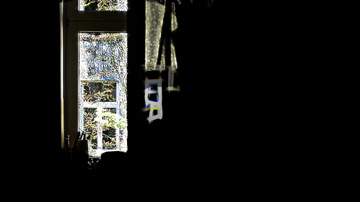
05th September 2024 - Almost a still life, slowmotion 14
A short film in slow motion combines itself twice. A still life as a film seems absurd. The film can only be recognized by a slight shimmering of colors, otherwise one could think that it was a photo that was animated. Anyway, here's a slow motion movie that's about 4 minutes long. It's a silent film
Video
Almost a still life, slowmotion 14, Video
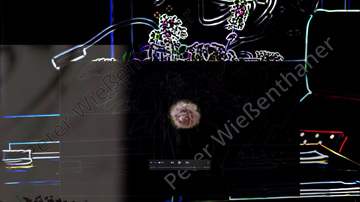
22th of August 2024 - Pan into trees, slowmotion 13
Two 2-minute shots at 100 fps into treetops. Once from right to left and once from left to right. In post-production, the takes are blended together and put into slow motion. The foliage is traced more or less sharply. The original sound is also slowed down and combined in multiple layers.
Video
Pan into trees, slowmotion 13, Video
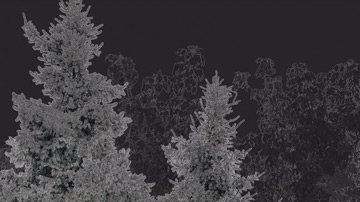
13th of August 2024 - slowmotion 12, Antonplatz Berlin
Various tram lines stop here at short intervals. There is a traffic of trams, cars and pedestrians until late at night. Two takes, recorded in 100 fps and significantly slowed down again in post, are contrasted in different ways. On the one hand, the approximately 8-minute individual takes are divided into many small sections and in each case Take 1, small section, is inserted, then Take 2, small section and then Take 1, small section again. This shifting principle continues until the two takes have come to an end. This process is visible, and this is the further way, through the different application of the drawing effect. Another way is to present the image without effect, but with strong slow motion. The sound is compiled from a variety of original recordings of this scenery. On the one hand, the multiple original tone is assigned to one entire take in a compact manner, and the transformed tone is assigned to the second entire take. The transition from the transformed tone to the original tone is interesting. Perception takes 1 to 2 seconds to recognize that the transformed sound has ended, even though the cut from transformed sound to the original sound is hard. In contrast, there are the cuts from the image takes, which are treated differently: it is always a soft transition. The film is approximately 16 minutes long.
Video
Slowmotion 12, Antonplatz Berlin, Video
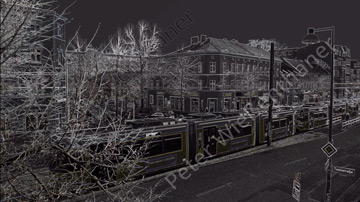
19th of Juli 2024 - Slowmotion 11b, Panning
Recording at 100 fps, extreme panning. The camera was rotated very quickly on the tripod while recording. The camera was in our garden. In post-production the speed was reduced as much as you can see in the pictures, slow motion with little effect. Right and left rotation can be seen at the same time. The original sound has been changed and regrouped.
Video
Panning, Slowmotion 11b, Video
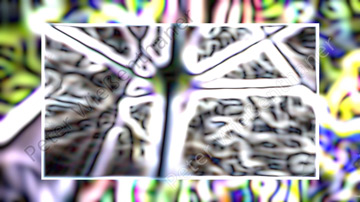
17th of July 2024 - Play with SPO, Instructions
Recording at 100 fps, extreme panning. The camera was rotated very quickly on the tripod while recording. The camera was in our garden. In post-production the speed was reduced as much as you can see in the pictures, slow motion with little effect. Right and left rotation can be seen at the same time. The original sound has been changed and regrouped.
Video
Play with SPO, Instructions, Video
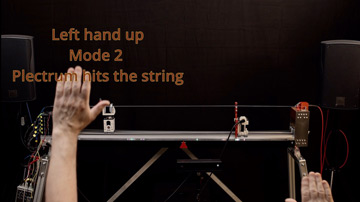
01th of June 2024 - The Goeltzschtalbruecke
The Goeltzschtalbruecke is a railway bridge in the Saxon Vogtland district. It is the largest brick bridge in the world. The viaduct with a total of 98 arches is considered a landmark of the Vogtland and spans the Goeltzsch valley on two tracks on the Leipzig–Hof railway line between the towns of Reichenbach im Vogtland (Mylau district) and Netzschkau.
Together with the similar but smaller Elstertal Bridge, the Saxon-Bavarian Railway Company began building the 78-meter-high arched bridge in 1846. The following year, the Saxon-Bavarian State Railway took over further construction and completed both bridges at the same time on July 15, 1851. This meant that, two years after the connection from Munich to Hof and four years after the connections from Berlin to Cologne and Vienna, the rail connection from Berlin to Munich was also fully accessible. Both bridges are among the oldest examples of railway history in Germany. Source: Wikipedia
Video
The Goeltzschtalbruecke, Video
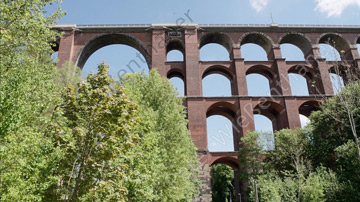
26th of April 2024 - Slowmotion 11 - Chestnut in the backyard
There is a chestnut tree in our backyard that is taller than the surrounding houses. Now, in spring, this chestnut tree is populated by birds, insects and other animals. With the 24mm lens I filmed this tree and its surroundings for around 15 seconds at 100 fps. In DaVinci Resolve Studio I changed the color, the tempo and traced outlines. This treatment highlights the birds flitting through the branches, small insects and flowers. The film is now almost 3 minutes long.
Short impression in 4K. The entire film can be ordered from me in 4K.
Video
Slowmotion 11 - Chestnut in the backyard, Video
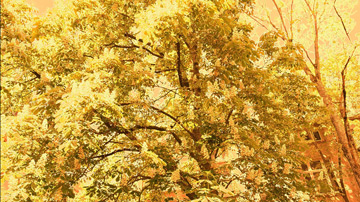
April 11 2024 - The starting point of this film is a shot of the flowers of a carnation cherry in our garden. Filmed wide open with a zoom lens at 100 fps. The area from foreground to background was made possible via the motorized follow focus. This is not easy to see in the “normal display”. The splendor of the flowers contradicts this. Two measures help the viewer see: extending the recording to 16 minutes and the "Edge Detect" effect in DaVinci Resolve Studio and a specific color design. This 16 minutes was copied and plugged into "Reverse" the first 16 minutes, a strong slow motion. The so-called Boukeh effect becomes an essential part of this film; it makes the levels of depth of field clearly visible. Short detail displays show the :::almost::: original state of the recording.
The shrill whistle of a bird, lasting around 16 seconds, can be heard in the original at the beginning of the film. As a result, the bird's whistle was changed several times and combined into a total of 16 tracks.
Slowmotion 10 - Blossoms
Buy film or audio file here
March 08 2024 - The Berliner Allee in Berlin-Weissensee, recorded at 100 fps. Strong slow motion in the editing. The people, the tram, the cars and the houses in the film are traced in detail and outlines. Part of the film is in black and white and part is in color. The depth of field when shooting gives everything in the film a high degree of plasticity.
The sounds of the street were recorded in stereo. However, rearranged in the film. Therefore it is a game with expectations that are not fulfilled. The sound becomes its own level, but it has a strong connection to the visual.
Slowmotion 9 - Berliner Allee
Buy film or audio file here
March 08 2024 - Addendum to Slowmotion 7, Trees is Slowmotion 5, Trees. There was almost no wind during the recording. Due to the extreme slowdown of the recording, the image is almost still. This circumstance makes the massive sound more noticeable. The image is almost flat-character-like with a slight plasticity. The recording is 8 seconds long, with 100 fps, the slow motion is 7 minutes and 19 seconds.
Slowmotion 5 - Trees
Buy film or audio file here
February 20 2024 - The Strasbourg Cathedral is one of the most important cathedrals in European architectural history and one of the largest sandstone buildings in the world. It was the tallest building in the Middle Ages.
I filmed the building from the forecourt, from above and from the inside. The recordings of the individual parts are approx. 15 - 20 seconds long. With DaVinci Resolve, the individual parts were extremely slowed down and the outlines of the individual parts of the structure or their surroundings were "traced". The film consists of 3 parts and its total length is 32 minutes.
The sound was recorded for the individual parts in front of, on or in the building and distributed in several repeating sections over the entire length.
Film Strasbourg Cathedral
Buy film or audio file here
Film Strasbourg Cathedral
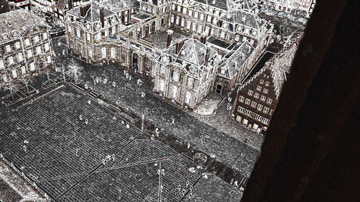
February 06 2024 - It's windy in the backyard of our house. The trees move in the wind. I recorded this for 29 seconds at 100 fps. The 29 seconds were stretched to 8 minutes. The trees in the film are traced in detail - branches and trunks - in their outlines, kept in black and white. This measure and depth of field give the film a high degree of plasticity.
The noises in the backyard were recorded with 2 microphones, 3 tracks in total. 1 track was also stretched to 8 minutes. In addition, all tracks in their original length were distributed 12 times over the 8 minutes. The pitch of each individual track was changed, and the chronological arrangement of the 3 tracks was slightly shifted relative to each other.
Slowmotion 7 Trees.
Buy film or audio file here
January 27. 2024 - Without sensuality no object would be given to us, and without reason none would be thought of.
Film
Buy film or audio file here
04. January 2024
Phill Niblock has died. A great composer.
I'll miss meeting Phil, that's sad.
More informations please have a look at the link: Link
Phill Niblock, SKOP Festival 2003, 10 years later, Link
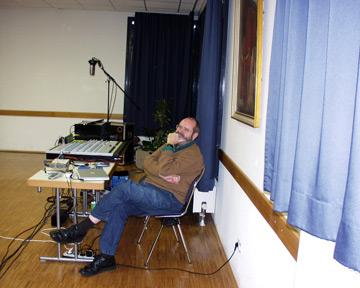
January 19. 2024 - Slowmotion 6
I shined a powerful LED lamp into the crystals of our chandelier. Due to the different frequencies of the individual colors, the light on the wall is reflected in different areas of the wall for individual colors, have a look to the lamp image. The recordings were taken at 100 fps, the room was completely dark and only the light refractions through the crystals shone. The tripod was always in the same place, but I moved the flashlight. This resulted in movements of the colored areas in different directions at the same time. It's a single take, with no cuts and no fades.
In DaVinci Resolve, these movements have been amplified. It was quiet except for very muffled noises. In 25 audio tracks I made these noises dynamic in volume, in a movement through the pan and in fading in and out of the individual tracks.
Slowmotion 6
Buy film or audio file here
January 04. 2024 - Slowmotion 4
Nature shot: grass, bushes and trees. 3 shots, 50FpS to 120FpS. Zoomed into the picture in 2 shots during recording. The recordings were expanded to extreme slow motion in DaVinci Resolve Studio. In the Fairlight engine I improvisedly transformed the original sound into a total of 7 tracks, creating its own world with some connections to the image. Rendering the entire film was very time-consuming due to the 7 tracks in the Fairlight engine. As already stated: It is much more time-saving if the sound editing takes place in ProTools.
Slowmotion 4
Buy film or audio file here
Dezember 16. 2023 - Slowmotion 3
Photo towards Antonplatz, tram stop, winter 2023.
Almost nothing happens due to the extreme slowdown of the 18 second 100 fps recording. Edited to almost 30 minutes, it almost looks like a photo. The sound strongly counteracts this. The transformations take place in the pure fifth and the pure octave. Clay-like shapes appear in the stream of noise and disappear again.
The film was shot with automatic white balance, unlike SlowMotion 1 and SlowMotion 2, which were shot with 5600K white balance.
The automatic white balance fluctuated minimally around a certain value during the recording and this led to fine color gradations. The sign art in the scene illustrate these color gradations.
The film was edited in DaVinci Resolve Studio, the original audio in ProTools. DaVinci's Fairlight engine didn't offer enough options for my sound editing, so I edited the 18 seconds of original sound in ProTools.
Slowmotion 3
Buy film or audio file here
November 30. 2023 - Slowmotion 2
A 17-second film recording from November 27, 2023 was recorded at 50 fps and also made 15:19 minutes long in DaVinci Resolve. These measures created a strong slow motion effect. Film shot in Berlin Weissensee, tram stop Antonplatz.
The original sound of this scene was transformed and adapted to the movement.
Slowmotion 2
Buy film or audio file here
September 30. 2023 - Slowmotion 1
A 13-second film recording from September 27, 2023 was extended to a length of 21:28 minutes using DaVinci Resolve. The resulting extremely slow movements are almost invisible.
As music, I recorded a variant of Hit machine: 7 tracks of a composition realized with MAX / MSP. It is a dynamic system, it regulates and expands itself. This leads to a variety of possibilities for sound design. Hit machine was performed in: New York, Hamburg, Berlin and Frankfurt. Hitmachine can independently generate form blocks that can be clearly distinguished from one another and is therefore able to create large form relationships. This machine also makes it possible to create musical breaks.
For Acoustic Frontiers, a radio station in Canada, a total of 6 variants of hit machine were created, each of which was presented in approximately 20-minute broadcasts.
How can the connection just created be understood?
Extending 13 seconds of film from a street that is a little busy to a duration of 21:28 almost creates the impression of a photograph. The very slow pace of the film is diametrically opposed to the high pace of the music.
This may lead to more concentration on the music.
Slowmotion 1
Buy film or audio file here
August 15. 2023 - Thunderstorm short Film.
Buy film or audio file here
July 15. 2023 - Non-public screening of my film, “Berlin, Monbijou-Areal”, in Frankfurt. It was a private invitation.
The film screening was a success. Although the film contains no music and no commentary, it was viewed by audiences as: “this is a great film”; “very good film” etc. I was happy about that. Because: I wasn't sure whether an audience would not only follow the recordings of "some streets in Berlin" for 1 hour and 45 minutes patiently but also with interest.
Trailer
Non-public screening - Trailer
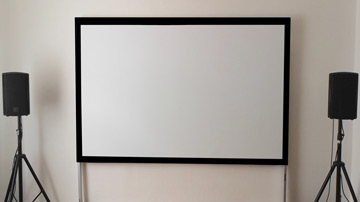
April 24, 2023 - Berlin, Monbijou-Areal, a film.
The film about the Monbijou area in Berlin is finished. It is a film about the architecture of an area in Berlin that includes the Carré of Kupfergraben, Monbijou-Bruecke und-Strasse, Ziegelstrasse, Oranienburger Strasse and Tucholskystrasse. There are film recordings from 2022, March, June, October and March 2023, plus photos from 2009, which were processed in this film. The photos from 2009 show changes in the architecture since that time. The trailer shows essential procedures for the production of the film. The film has a length of 1 hour and 45 minutes.
Here the Trailer
Berlin, Monbijou-Areal, Film, Trailer
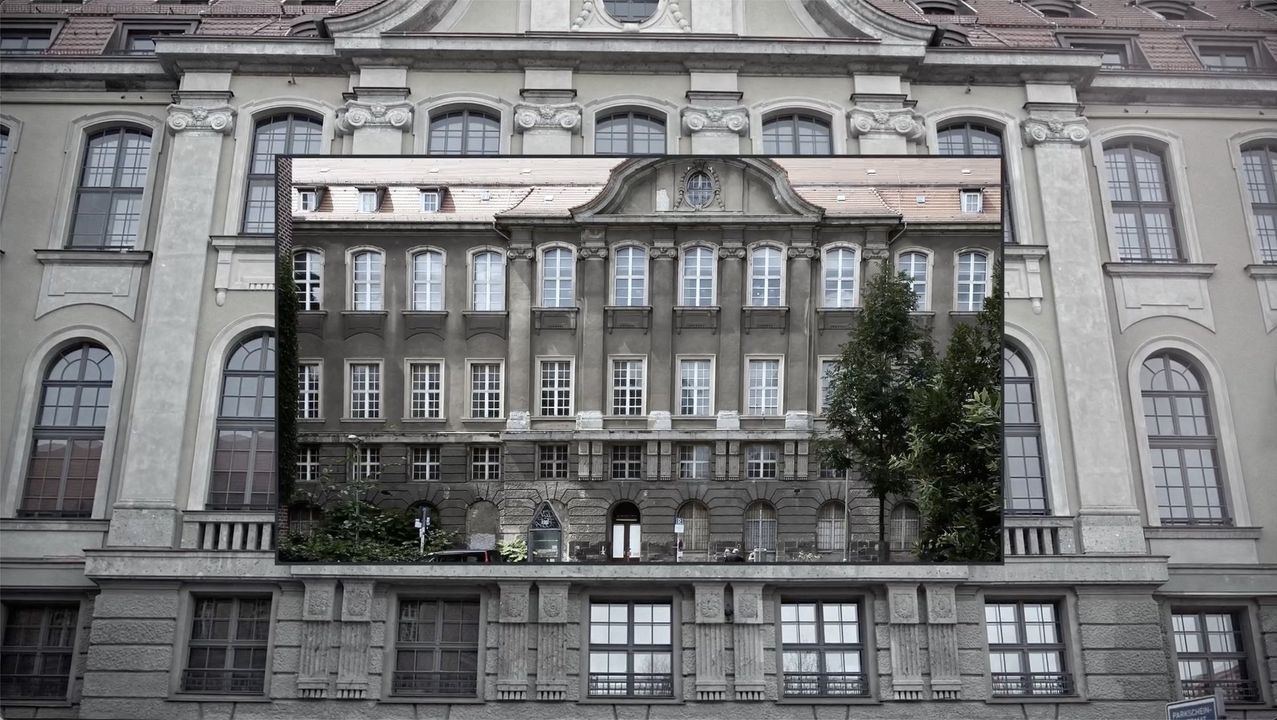
July 21. 2023 - With the new formula for calculating the travel distance based on hand movements, it is now possible for the sliders to cover the entire path quickly with a quick movement of the hands or for the sliders to move extremely slowly with a slow movement of the hands. This makes it almost possible to target a target with pinpoint accuracy. The first step in the solution was an exponential equation for determining the routes. I tested different bases and exponents. Since the entire length of the travel path from the position slider is 26265 individual steps, the exponential equation results in the smallest possible step of approx. 0.4 mm.
The second step of the solution: if the string divider reaches a range of 200 steps around a Pure Interval through the hand gestures - about 2 mm - then the string divider is guided to an exact position that represents a Pure Interval. Now a target can be precisely controlled with the hands. A "non-musician" is now supported to play Pure Intervals, see images.
Because ::: The play of dissonances has clear leeway in terms of accuracy. If a dissonance, e.g. a minor second, is a little too high or a little too low, then it will always remain a "minor second". However, if a Pure Interval is a little too high or a little too low, then we perceive it as "out of tune".
Formula for calculating, JPG
Formula for calculating, JPG
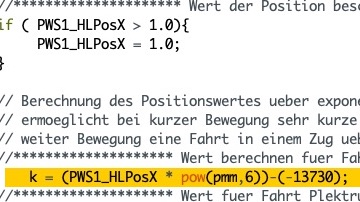
December 21, 2022 - The composition "Exploratory, Rhine version “Looking for Daniel”, #9(number nine)" by Phill Niblock was realized with the SPO and is now available on CD. The composition was realized with the SPO. This required some enhancements to the instrument to produce a sustained tone that resembled the tone produced by a human being. An Ebow was installed on the instrument and each voice was programmed in its pitch over time. A particular challenge was to implement the microtonal fluctuations inherent in human sound production with a wind or string instrument in these programmings.
As part of the roulette performance of Phill Niblock's "6 Hours of Music and Film" in New York, part was the first performance of my interpretation of this work.
Here is my interpretation of the composition by Phill Niblock: Link to the mp3-file.
Buy film or audio file here
Buy film or audio file here
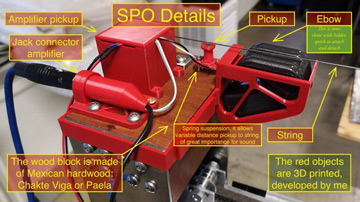
September 15, 2022 - Prague, on Charles Bridge.
Video
Buy film or audio file here
September 14, 2022 - concert with the SPO in Prague. Organizer was ECHOFLUXX, organized by the American composer Dan Senn. The instrument could be discussed in detail after the game. The audience took an active part in the discussion about the instrument. Of particular interest was the tuning-technical background of the instrument with the possibility of positioning the string divider extremely precisely, e.g. to make the difference between a beat and a pure consonance audible and visible.
Video
September 9, 2022 - SKOP Festival • Computerm-Musik IV, playing with the stringed instrument SPO. I played the "Follow the LED's" version. Here, within an area between 4 glowing LEDs, sound actions are to be triggered by hand gestures. I play according to the specifications for my playing without sheet music.
After I played, the audience could also play the instrument. Apart from the requirement to trigger sound actions in the area of the 4 lit LEDs, there were no further requests for the audience.
That pleased the respective players and the audience.
Here is the Video of my performance - Buy film or audio file here
Here the Video of the performance of the audience
SKOP-Festival 2022, Computer-Music IV, Performance SPO
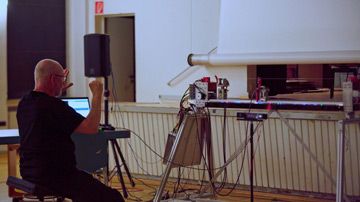
July 02, 2022 - My grandson Matthias played the gesture-controlled string instrument SPO. After it was clear how to play the instrument, he played according to the program "Follow the LED's". The instruction is: Set tone articulations within the range of the 4 lit LEDs. Matthias has been playing the piano for 10 years, which was not a hindrance in the end.
Buy film or audio file here
Matthias Wiessenthaner toco el SPO - Video
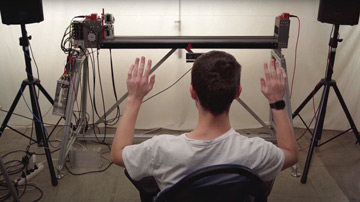
June 21, 2022 - Stream concert in Helsinki at Äänen Lumo on October 26, 2021 - Addendum. The live stream could not be recorded due to technical limitations, here is the link from the rehearsal to this concert. The concert took place as part of the festival: "Hybrid Night: Äänen Lumo + MUU Helsinki + Station of Commons". In the performance I was able to realize a lot of the composition, which made me very happy. Roberto von Äänen Lumo supported the entire streaming process, the test phase and the concert extremely well. The feedback on the performance was very gratifying for me. Thanks to Lumo Helsinki.
Here is the video of the rehearsal:
Buy film or audio file here
Next performance with the hand gesture instrument is on September 14, 2021 in Prague at ECHOFLUXX 22.
Video of the rehearsal Äänen Lumo-Helsinki
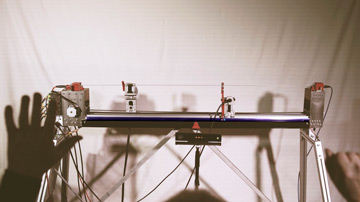
07 March 2022 - Short film about what happened outside my window. Also in this film, as in "Two doves and one dog" the sound has a special place. In the gateway large metal parts were loaded onto a transporter. The very large driveway into the interior of the house opposite acted as a resonating chamber, which acoustically amplified the activities of the workers enormously. All recordings are influenced by these sound events.
Buy film or audio file here
Behind the window - short film
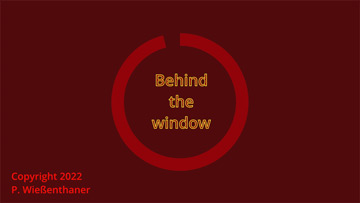
February 27, 2022 - 2 days of stormy weather. In between one day break from the storm. Movement in a bush and in the trees in our backyard. Plus, once again, a visit from a sparrowhawk, which really shouldn't show up in town. Editing the sound highlights events.
Buy film or audio file here
Storm - short film
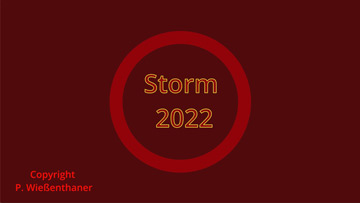
February 25, 2022 - Some excerpts of a rehearsal with the SPO. The clips represent the main actions that are possible with the SPO - Super Prime One. There are a total of 4 hand gestures that can be used to control the instrument: Open and close hand for striking the pick, move open palm to the right and left for driving the slider, Victory sign for rotating the pick to play loud and soft. This applies to both hands. The LED's show the way through the tonal space, their programming is the essential part of the composition.
The alternation of dissonance and consonance is of outstanding importance, because: Even in the most modern music we cannot get around this fundamental connection. The only question that arose for me was, how do I address this connection? The gesture-controlled instrument SPO gives an answer.
Buy film or audio file here
Buy film or audio file here
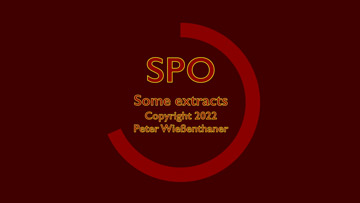
February 15, 2022 - For 6 hours of film and music by Phill Niblock at "Roulette Intermedium" in December 2021 the composition "Exploratory, Rhine version "Looking for Daniel", #9(number nine)" was realized with the SPO and premiered within the concert. For this purpose the SPO was extended by an essential addition, the Ebow. It allows the playing of a continuous tone and subsequently the recording of 23 voices, which were finally combined into a 2-track version.
Here the mp3-file with the composition of me. Buy film or audio file here
Here the link to Phill Niblock's, 6-hours with music and film, poduced by Roulette Intermedium, New York.
Phill Niblock 6-hours music and film from Roulette, New York
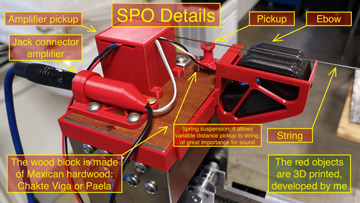
January 13, 2022 - Short film about two pigeons and a dog. The sound of the film has a significant function in this film. It shows us the way to the dog.
Buy film or audio file here
Buy film or audio file here
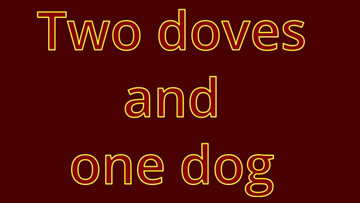
October 7, 2021 - Video Walk Berlin
From 63 points of view the street situation was recorded with video and audio. Two streets were filmed, they run parallel to each other. A specific color appearance was created in DaVinci Resolve. The audio recording was not changed: No echo, no reverb, no compressor, no other kind of alterations.
Please note that it's a 4K video with about 5.9 GB and needs corresponding download capacity.
Buy film or audio file here
Video-Walk Berlin - Buy film or audio file here
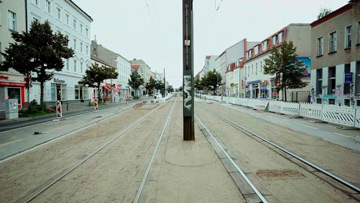
July 13, 2021 - Workshop in my workshop: Playing the SPO via hand gestures
The gesture-controlled string instrument can now be played by you. Two programs are available. "Follow the LEDs" and "Find the LEDs". The first program leads you through the tone space with the illuminated LEDs and with the second program you should find LEDs that do not light up, i.e. if you are in the range of a pure consonance, the corresponding LED lights up and you can trigger a sound action. The correct position of the interval is then approached with the string divider.
The workshop has been well attended so far, especially "non-musicians" were enthusiastic about playing with the instrument. Soon pictures from the workshop.
July 8, 2021 - Book presentation by Circuit-Art Publications, Mainz
PORTAIT MÉMOIRE is part of an art project by Harald Kubiczak with various forms that deals with memory.
Actually, I only vaguely remember the interview Harald conducted with me in 1998. The picture of me from back then has also disappeared from my memory.
I am happy to draw your attention to this book, regardless of the fact that my person is also represented in the book. The book cover shows a certain discomfort in today's art education. It exemplarily shows how remembering can be represented graphically. It is a book apart from the established art business and its media mediators. They have shown no interest in the book.
February 14, 2021 - First play with gestures from SPO via Kinect camera
After Thomas Perizonius had finished programming the gesture recognition, I was able to program the motors for the slider movements, the string divieder and the pick for their respective actions. A simple programming shows the basic actions for a play with gestures of the SPO.
Now details are programmed.
Please have a look to a short Video of 2 minutes.
Play from SPO with Kinect-camera - Video
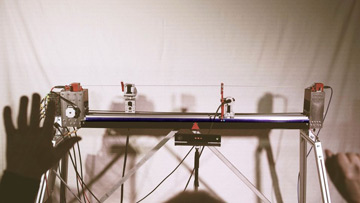
October 21, 2020 - Controlled Randoms lead to different sequences and articulations. The composition particularly emphasizes different overtone articulations and thematizes the relationship between the right side of the string and the left left side of the string. Two mood systems were inited: the pure mood and the mood according to the 106th root of 2. This leads to up to 2 Hz intervals in the root mood. The composition is about 20 minutes long. I refer to them as LARGO.
The moods are indicated by the LED lights. White LEDs represent the intervals of the pure mood. The red LEDs represent the pure intervals such as: pure prime, pure third, pure fourth, pure fifth and the pure octave. Points between white and red LEDs are intervals of the 106th root of 2 mood. The pure prime is particularly highlighted by a special LED light and a strong articulation of this interval. The visual indications of the change from consonance to dissonance and vice versa, or from dissonance to dissonance to dissonance, etc., may be a support for the perception of the tonal events.
Buy film or audio file here
Buy film or audio file here
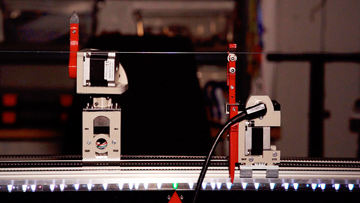
October 06, 2020 - The light-case is mechanically and programmatically complete. Different moods - pure mood, Pythagorean mood, 2nd-root-of-106-th mood etc. - can now be displayed visually. Depending on the position of the string divider, the respective LED lights up in the corresponding color. This is a prerequisite for playing with hand gestures, an essential orientation feature. Further development is now focused on camera detection programming of hand gesture recognition. An extensive composition = programming is completed, a video recording will be shown here soon.
July 19, 2020 - The composition by Phill Niblock, Exploratory, Rhine version “Looking for Daniel”, with the SPO has been realized. For this composition I have expanded the instrument by two essential objects: a holder for the ebow and a string divider with damper.
The smallest interval in Phill Niblock's composition is approx. 2.5 - 3.5 Hz. The 20 voices span the area of ??a "strange" minor third. Each voice contains approx. 22 sections of approx. 1 minute length, the pitch changes often only by 20 cents, the use of the next tone can be 15 seconds before or 15 seconds after the end of one minute.
The string instrument I developed is able to precisely control an engine position and articulate a tone at this point. This process can be reproduced exactly. Since cents are not a measurement variable, the intervals had to be determined in Hz and the frequencies assigned to an engine position, a rather lengthy procedure. I wrote a program for this. Then it was time to realize the composition. In the implementation program, the individual trips for the motors, the hits with the pick and the damping of the string were programmed. The change from one pitch to the next had to take place within a period of about 30 seconds. This was achieved in the program through random functions. The "stimulation" of the pitch could also be implemented by means of random functions: While the Ebow let the respective tone sound for approx. 1 minute, the string divider moved irregularly back and forth in such a way that the pitch had a frequency of approx. 2 Hz fluctuated, similar to the playing of an instrumentalist of unbound instruments.
With this game program, the individual voices could now be recorded, the conclusion was the mix on a stereo output.
Buy film or audio file here
Project of corona.
SPO with Ebow fuer Phill Niblock, Rhine version, 2019
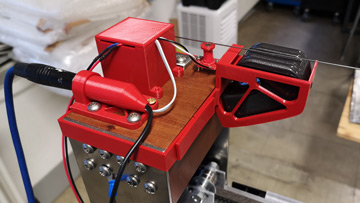
Test for the recording - Video
March 29, 2020 - Due to the current corona crisis, I am calling the workshop concert on March 8, 2020 to cancel. Here are the 6 programming examples - games of the electronic stringed instrument SPO. SPO, Super Prime One, an instrument that takes off the Pure Prime to the right extent. The Pure Prime is of outstanding importance for a play without notes. It is the big common denominator, a meeting point and location for the players. From which you can start a game in different directions. More on that soon.
Over the next few days I will upload 6 videos little by little. They show the diverse possibilities of the electronic stringed instrument.
Video No. 1
Video No. 2
Video No. 3
Video No. 4
Video No. 5
Video No. 6
Buy film or audio file here
SPO - Super Prime One

July 12, 2019 - Requirements for my composition
The pure intervals such as, prim, third, fourth, fifth, sixth lead in the electronic string instrument to strong overtone formations. It always sounds two parts of the string, when the plectrum strikes the string. The string divider is a ball bearing, the support surface of the string extremely small, so that the energy of the stricken string part transfers heavily to the other side. This results in very interesting sound qualities for me, which I followed up in a composition. Performance on Sept. 20/21 at the SKOP festival "NOW" in Frankfurt am Main.
Red stripes - pure mood; Pink stripes - octave, struck only on one side; Blue-white stripes - octaves as interval left and right struck by the divider; Green stripes - Pythagorean wholetone 6/8; Yellow stripe - 6th root from 2, wholetone
Not to see the 106th root of 2, 106 tone steps / octave. The steps are smaller than the width of a strip and are therefore only represented in the program.
All intervals were determined using a mathematical pattern, the intervals are available in arrays.
106 pitches / octave lead to very small tone steps. They are at the limit of hearing.
In the composition, the individual mood systems are represented with their special characteristics.
Over the next few days I will upload 6 videos little by little. They show the diverse possibilities of the electronic stringed instrument.
Juni 14, 2019 - Electronic string instrument at "night of sience" in the University of Frankfurt. Successful first performance of my new electronic instrument.
Many discussions with interested people led. Many were impressed by the manifold possibilities of the instrument.
The next performance with the instrument will be at the SKOP Festival in Frankfurt.
Video No. 1
Mai 23, 2019 - The electronic string instrument is almost completed in the 1.0 version. The circuit is still being installed for the pickup and the last final pickup. The electronics of the pickup's were produced in collaboration with Thomas Perizonius. The basis for this is the feasibility study by Diplom Ingenieur of elektronic, Ulf Schaedla. After many attempts with different pickup versions, a final pickup with 3000 windings was produced. Thomas Perizonius wrapped the pickups and made the electronic circuits. The final pickup now has 3000 windings and transmits far into the upper frequencies the sound. The associated circuit provides the requirement for this.
The 5 engine are controlled with a Teensy 3.6. The library PJRC provides for the PWM control is excellent in terms of the acceleration and slowdown of the motors. It allows very fine settings.
The drivers of the motors can be adjusted exactly to these adjustments in the current levels. The circuit for the motor control I have simplified: now all 5 motors are controlled by 1 Teensy 3.6 and powered by the same drivers. This significantly facilitates the pending programming.
The instrument will be shown publicly for the first time on June 14, 2019 as part of the "Night of Science 2019" by the University of Frankfurt. The basic possibilities of the instrument are shown.
Video No. 2
Electronic string instrument, test phase, Video
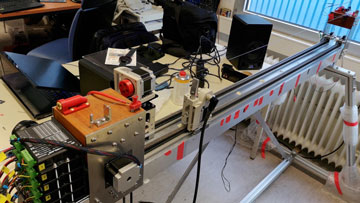
April 27, 2019 - The mechanical parts of the instrument are almost done. Only the pickup's are missing. This is more and more challenging. We are proceeding from a study by Ulf Schaedla, which we, Gero Koenig and I, commissioned in 2011. Despite this study, it is difficult to determine the boundary conditions for the production. Since we want to push into a high cutoff frequency, there are special requirements for the design of the magnets and their winding. Roughly speaking, the higher the cutoff frequency, the weaker the lowpass and also the higher frequencies. This requires electrical wiring to balance the frequency band.
Meanwhile, we have made about 10 different pickup's and come closer to an optimal pickup for a string with the frequency of 85 Hz closer. There are still 4 more variants produced and then the pickup is connected.
In the image on the left, the string is not yet installed on the instrument. This has happened in the meantime and from the beginning of May the first tests will begin, which will then be used in the programming of a first compositional idea.
Video No. 3
November 2018, Atacama Desert in Argentina - Sounds played into extreme landscapes.
The game is very difficult in these landscapes. Every little effort makes extraordinary effort. The low oxygen content of the air, the low temperature, the strong wind, the high UV radiation, leads to reduced concentration, headache, dizziness and shortness of breath. Coca leaves in the mouth and coca tea help significantly against the altitude sickness. The lava field Piedra Pómez e.g. is extremely dry, no moisture in the air, no animals, no vegetation. Each breath immediately led to a vertigo attack. The stay in the lava field should be limited to 30 minutes and drink during the stay and afterwards a lot of water.
Everywhere I played, I could only play the sound very briefly. The circumstances may give you 5 to 10 seconds of sound. But just because of the adverse circumstances, the play was in this grandiose landscapes into a special experience.
Here are the videos:
Antofalla, 3664 meters altitude Camera: Julie Beziat, Berlin - Video
Laguna Grande, 3850 meters altitude Camera: Margarita Gimenez, Belen - Video
Laguna Diamante, 5650 meters altitude Camera: Margarita Gimenez, Belen - Video
Campo de Piedra Pómez, 3500 meters altitude Camera: Ingrid Stika, Frankfurt am Main - Video
Video No. 4
22th und 23th of September 2018, Frankfurt, SKOP-Festival - In Frankfurt, I presented two more pieces with new programming and at the end of the festival played Birgit Ulher, Trumpet; Claudia Robles-Angel, Electronic Music; Thomas Gerwin, Drum and I with the Flutes an improvisation, which began after a short consultation.
In the image on the left, the string is not yet installed on the instrument. This has happened in the meantime and from the beginning of May the first tests will begin, which will then be used in the programming of a first compositional idea.In the image on the left, the string is not yet installed on the instrument. This has happened in the meantime and from the beginning of May the first tests will begin, which will then be used in the programming of a first compositional idea.Video No. 5
6th-9th of September 2018, Berlin - "15. Internationales Klangkunstfest Berlin".
Play with the Electronically Steered And Selfplayed Bass Flute and a special acoustic flute and from 6 to 9 September exhibition of the electronic bass flute.
Three programmings for the following plays:
The Electronic Bass Flute plays himself and is steered through my play;
The Electronic Bass Flute plays itself and is steered through her own and
The Electronic Bass Flute plays itself and is steered through her own and through my play.
Solo with two flutes at the same time
All decisions within the programming take place in a period of about 10 to 200 milliseconds and influence during this period the actions of the Electronic Bassfloete. The flute plays in "real time" and my play anyway.
More informations: http://www.thomasgerwin.de/aktuell.html#Klangkunstfest
Video No. 6
18 July 2018 - Status of work on the electronic string instrument
For the further construction of the electronic string instrument this was completed:
1. Power supply of the engines with 48V, 4,5A for fast movings;
2. Set up a differentiated power supply for the different sensors;
3. Basic circuit soldered on boards;
4. Connect all the motors electronically and programmatically with two Teensy 3.6 and an Arduino Micro. One Teensy and the Arduino Micro for the motor control, another Teensy for the audio processing.
The next steps: Installation of two motors on a slider for the plectrum and installation of a motor on the second slider for the spacer of the string. Setup of the second Teensy with the Teensy-Audio-Shield and first tests. Construction of a stand with aluminum profiles for the entire instrument including a plate for the electronics.
Schaltung elektronisches Saiteninstrument - Video
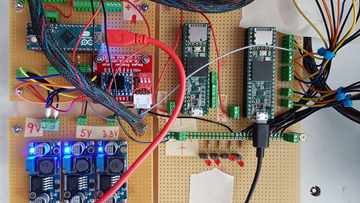
8th/9th of June, 2018 - "Night of Sience“ in Goethe university of Frankfurt
I having there the electronic bass flute introduced. For it I have programmed some songs which the flute played independently. The flute is tuned in Kellner II tempered mood.
To play articulated tones clearly of each other a flap in the headjoint was appropriated. An engine opens and closes fast the flap around the airflow to close or to give the air. For it another microcontroller with suitable electricity supply was inserted in the case. The controller is steered about the main controller, look at the image.
May 26 and 27, 2018 - Extended electr. bass flute on the "MAKE Rhein-Main al Tatcraft"
On the fair „MAKE Rhein-Main 2018“ I had many interesting talks with people from the most different areas: Musician, engineers, information scientists and from many other areas. The talks were marked by a wholesome curiosity to the different aspects of the electronic flute. The questions often turned on the reason for the construction of this flute. The spiritual background became questions, as well as the technical problems of the constructive and program-technical circumstances. The possibility of the control of the airflow by the programming was astonishing for people. Because to play the possibility loudly and quietly and to go to the next octave. Two nice days for me and I also thinks for the prospective customers. Thanks to the organizers of the „Make the Rhine Main in 2018“ and my colleagues of the "HackerspaceFFM".
The Electronic Bass Flute plays itself and is steered through her own play. I play in addition with an acoustic flute, see picture;
27th of April, 2018 - Concert By MEX In Dortmund
Solo play with two flutes. With both flutes it is possible to venture till the smallest intervals.
3 different plays whose basis 3 different programmings of the electronic flute are realised.
A play together not always originates in is evident who reacts now or who puts the accents: The acoustic player or the electronic flute?
The Electronic Bass Flute plays himself and is steered through my play and
Since December 2017 - Construction on a electronically steeered stringinstrument
First stage is temporarily finished. The guide rail for the carriage with the spacer and the guide rail for the plectrum are mounted on the aluminum bar. The carriages are powered by Nema 23 motors by Trinamic, Driver by Stepperonline, DM542T, and Teensy 3.6. The video shows the movement of the two carriages. Both carriages are controlled independently. This is important for the free choice of positioning the carriage with the plectrum.
The powerful library for controlling stepper motors of the teensy company makes programming a lot easier. The video shows the movement of the car at a fairly fast pace.
Further tests will determine the optimal number of microsteps. Currently there are 3200 steps / revolution.
Next steps: Attach the string spacer spacers to the carriage and attach the plectrum motors to the other carriage. Then attach the string over the motors.
The holders for the motors, the gear and the pulley were specially designed and realized in 3D printing. The toothed belt attachment on the carriage was milled in aluminum. Video of the rides.
The Electronic Bass Flute plays itself and is steered through her own and through my play.
Motors with holder, gear and pulley - Video
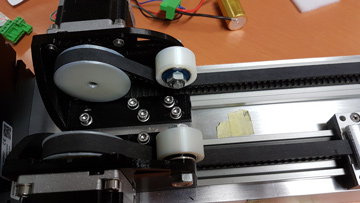
2018 - "floete aktuell"
Editorial contribution in the publication of the Deutsche Gesellschaft fuer Floete, over the electronically steered bass flutes.
He is rather extensive and gives an insight into the course of the development. In particular in the compositional idea which led to the constructions.
He summarises very well the complexity of the development.
Many thanks to the editorial staff from "floete aktuell" for this report. See PDF.
Also the Electronic Bass Flute shall be seen from the 6th to the 9th of September in the exhibition.
2017 - Electronic Music Unplugged on the 30th of November in Munich. Concert with Karl F. Gerber and Christoph Reiserer. After the performance of "Combination II with visual support" play together of the violin machine of Karl F. Gerber and the self-playing and steering electronic microtonal bass flute. Further a duet with the guitar machine of Christoph Reiserer and the acoustic microtonal flute, further a duet with Christoph Reiserer, soprano saxophone and acoustic microtonal flute and for the end a "Tutti" with all acoustic and electronic instruments.
Picture violin machine: Jakob Tauber
Picture guitar machine, Tutti and Combination II: fobographers
By one variety of possibilities in the programmings the Electronic Bass Flute plays certain-uncertain. The possibilities are tuned on each other, however, not predictable. It should work "how creatively". All decisions within the programmings take place over a period of from approx. 10 to 200 milliseconds and affect within this period the actions of the electronic bass flute. The flute plays in "real time". In the perception theory the present is a period of approx. 250 milliseconds. Before this period the future and after this period is the past. The activities of the electronic flute lie in the present and my play anyway.
Munich - combination II with visual support
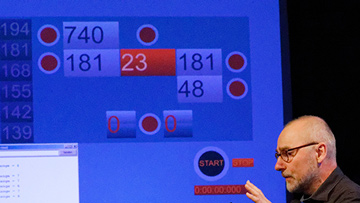
2017 - Festival SKOP, on the 10th and 11th of November in Frankfurt, Solo with the small electronically steered bass flute and play together with the violin machine of Karl F. Gerber. Solo I played the bass flute. The machines steered to themselves the play together with the violin machine of Karl F. Gerber mutually. No intervention took place from the outside.
More informations: http://www.wiessenthaner.de and http://www.thomasgerwin.de/aktuell.html#Klangkunstfest
2017 - MAKE In Darmstadt - Even playing and steering electronic micro-tonal bass flute presents itself. A fan generates the tones. By different aerial volume/time, it is possible to penetrate into the fifth and octave and into different overtone areas. The flute can play completely independently or it is steered through other players. The next performances: November in Munich, Freiburg and Frankfurt am Main.
In the flute small changes were appropriated in the construction, the integration of a fan, in the electronic control and new electronics case.
Video 1: Itself playing and steering bass flute
Video 2: By a player steerd itself playing bass flute.
Images: Details of this bass flute 1 - 2 - 3 - 4
Video: Demo
Buy film or audio file here
2017 - Second Electronically Self-steered Micro-Tonal Bassflute - The choice of the algorithms is an essential part of the composition process. During with the big bass flute the movement very slowly - per rotation of the spindle a distance of 0.5 cm is reached and with it a pitch change of approx. 1 hertz. The rotation time for 1 rotation lies with approx. 2 seconds. With the small bass flute the distance amounts to 5.5 cm for 1 rotation and a rotation is carried out after approx. 2Hunderstel seconds. The microphone attached to the flute takes the played notes and steers the movement of the pipe in his length through this.
The sound distances move from micro tonal intervals to almost to a semitone interval. The play of the tones is realised about one and exclusion data. Always in "hear in the pipe" with the play. The movement of the pipe happens fast. Aim was from the outset to construct two flutes with different signs for the play. A composition in the tones "how right away stand", a development almost is not to be heard and a composition in that the tones in very quick, expressive manner can be played.
Essential help my colleagues from "hackerspace-ffm".
This flute is soon recorded in Freiburg, Frankfurt and Munich.
Buy film or audio file here
Self-steering electronically micro-tonal bassflute
Video: Demo and Images: 1 - 2 - 3 - 4
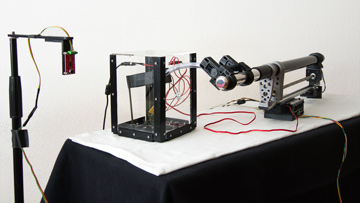
2017 - Klangfest Untergreith, Austria. Play in "film and music" from Phill Niblock with the small micro-tonal bass transverse flute. The intervals to be played move in a frame of 20 to 40 cents. An essential play instruction: no expression of the tones. Please, you look and hear the video.
Klangfest Untergreith - Play in "film and music from Phill Niblock" - Video
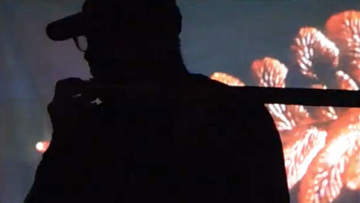
2017 - Klangfest Untergreith, Austria. For the first time the composition combination II" with the second electronically steered micro-tonal small bass transverse flute was played. In contrast to the first flute this flute is able to realise very fast a pitch change. Different algorithms allow a pitch change which can grasp the possible ton space to very small intervals. Besides, data are generated by the really played tone which determine the next pitch and an engine control in real time realise for the movement necessary in addition. Real time means for me a period of approximately 250 milliseconds. This time span is called in the perception theory also this what people feel as a present. In this time span all sound transformations also take place. The movement before the microphones serves for the triggers of the engine control, for the control of the sound transformations and not least for the sound in space.
Buy film or audio file here
2017 - Fair MAKE FRANKFURT 2017 my stand. Image 1, 2, 3. What pleased me particularly was the visit of a renowned flute maker from Vienna. He appeared enthusiastic about the possibility of moving the electronically controlled bass flutes on every length exactly and she making what playable on a hertz exactly. I played with the flutes in fixed intervals approx. 3-5 minutes. Although the game was unusual for most visitors, the fair visitors listened interestedly and tensely. The conversations with the audience were very pleasant for me.
2017 - Second electronically steered bass transverse flute - Composition construction ideas for the small bass flute and Ideas of the play is to determine the length of the flute pipe by algorithms and to steer it about an engine. The choice of the algorithms is an essential part of the composition process. During with the big bass flute the movement very slowly - per rotation of the spindle a distance of 0.5 cm is reached and with it a pitch change of approx. 1 hertz. The rotation time for 1 rotation lies with approx. 2 seconds. With the small bass flute the distance amounts to 5.5 cm for 1 rotation and a rotation is carried out after approx. 2Hunderstel seconds. The microphone attached to the flute takes the played notes and steers the movement of the pipe in his length through this.
The sound distances move from micro tonal intervals to almost to a semitone interval. The play of the tones is realised about one and exclusion data. Always in "hear in the pipe" with the play. The movement of the pipe happens fast. Aim was from the outset to construct two flutes with different signs for the play. A composition in the tones "how right away stand", a development almost is not to be heard and a composition in that the tones in very quick, expressive manner can be played.
The construction, draught of the single construction parts for the 3D-pressure, programming etc. are own idea and realisation. Essential help my colleagues from "hackerspace-ffm".
This flute was finished on the 22nd of Feb., 2017 and is soon recorded in Freiburg and Austria.
Buy film or audio file here
2017 - The next step with the electronically steered mikrotonalen bass transverse flute. The next step with this one electronically controlled micro tonal bass flute. The programming of the engine is unchanged, MAX/MSP-Patch, however, was extended by two voices. At the performance on December 14th, 2016, the performance was 3-voices, it is 5-voices now. One high voice and a very deep voice are come in addition. The extremely slow change of the pitch lets the impression arise as if the game remained on the always same pitch. Besides, the play encloses the area of 118 hertz to 170 hertz.
Buy film or audio file here
2016 - The first performance with the electronically steered bass flute - on the 14th of December first-time play with the SKOP festival "images and music II. A composition for this bass flute, 5 loudspeakers and real time frequency modulations.
Buy film or audio file here
2016 - First electronically steered micro tonal bassflute - After I have programmed with "hitmachine" a dynamic musical system, I thought, it would have to be possible to steer a flute through algorithms. For a few days I have produced this flute now in the prototype, see pictures. The step motor programming about Arduino and a motorshield is able to determine precisely 1-cent interval. For a play unrealistically, in particular with a bass transverse flute this bore. Here a value of about 25 cents is recognizable for the human perception.
For this flute a program has written in which a pseudo-random extends the flute pipe in a certain-uncertain manner and shortens again. Besides, the program is an important part of the composition. The preparations for the programming and the programmation were marked by compositional considerations. Of course also the whole construction, the choice of the mechanical parts and the creation of the mechanics, because they led, in the end, to the possibility of an interval regulation of 26. 6 cents.
With the play is very irritating if I do not know, whether the flute extended or shortened. I must completely get involved in the resonance of the flute, play laxly tensely and the pitch changes allow to "happen", then only the pitch changes are realizable. As far as the first impressions, soon detailed descriptions of this flute and the compositional ideas.
Essential help my colleagues from "hackerspace ffm".
Electronically steered big bass transverse flute - image
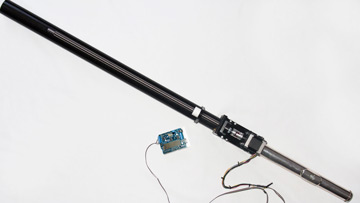
2016 - hitmachine for Acoustic Frontiers in Canada. A total of 6 pieces of music from hitmachine were generated. The pre-settings were so chosen that six formally very different pieces have originated. By a huge number of pre-settings it is possible to generate not only variations, but also different forms and/or form blocks. In addition a video about core functions in hitmachine and music 1 and music 2 for Acoustic Frontiers.
Buy film or audio file here
2016 - hitmachine in Berlin in SPECTRUM. For this presentation from hitmachine the pre-settings were so chosen that a piece of music originated in a realisation form. The animation was as in Hamburg with "sounds good!" which changes programming slightly.
2016 - hitmachine became to the Klangsymposium "klingt gut !" in Hamburg with new screen programming and with enlarged audio part presents. Hitmachine can generate only independently clearly of each other to be distinguished form blocks and is thereby able to form big form connections. Now, besides, it is possible to this machine to form musical breaks. The video documents the presentation. Because picture and tone have a common characteristic only in an abstract sense - they are generated by the same data streams - the presentation of picture and tone apart occurs. First part is to be heard of the audio part, then the picture part was to be seen quietly. In a 45-minutes talk the programming was introduced in the details.
Buy film or audio file here
2016 - hitmachine was presented of the festival "EXPERIMENTAL INTERMEDIA" in New York in a version with micro tonal bassflutes. Four glissando flutes - piccolo, big flute, small bass flute, big bass flute - were played circle-like in an always returning order. Besides, data streams in MAX permitted very small pitch transformations which played in in real time, one pitch over and one pitch under the played pitch. A play with pitches very near together in the pitch. Hitmachine was performed in 3 separate parts: audio-part, visual part with the animation and play with the glissando flutes with a performance duration of approx. 1:20 hours. Here a video - 3:30 minutes - with short impressions.
Buy film or audio file here
2016 - Hitmachine is developed. The dynamic system is further differentiated. The system regulated and extended itself. This leads to more varied conditions for the sound creation.
hitmachine will be performed 2016 in several times: New York, Hamburg, Berlin and Frankfurt.
For the performance in New York it will be presented hitmachine in a version with micro tonal bassflutes.
2016 - Hitmachine was presented November, 2015 in Bogotá, Colombia and in December, 2015 in Frankfurt in an audiovisual version. Substantially for the performances was a strict change of tone and picture. At no time tone and picture had appeared at the same time.
Hitmachine - Image concert Dezember 2015
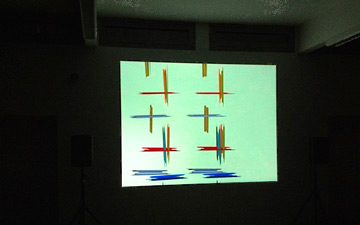
2015 - Play with micro tonal bassflutes in the composition of Gero Koenig "chord relief" for micro tonal bassflutes and Chordeograph.
2015 - New micro tonal bassflutes • Three new bodies for the small bass flute out of aluminium and coach voucher allow to make. The disadvantage of an "only micro tonal bassflutes" is the restricted sound extent from a little bit more than a big sixth. With these 3 flutes I try to limit this problem. Advantage of these flutes is: Play of extremely fine pitch differences. On the 12th of December, 2015 these flutes are played first in a composition by Gero Koenig.
Three micro tonal bass flutes, image
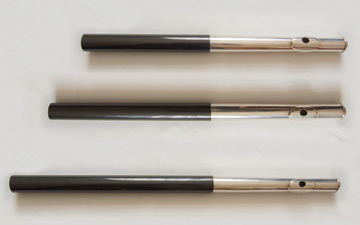
2015 - Peter Fjodoroff • My friend and colleague, the musician, actor and author Peter Fjodoroff, *09. 07. 1946 - †20. 08. 2015, has suddenly died. We played together since 1992 in the occupation preserved transverse flutes and tenor horn and in different bigger occupations. Our project "playing together" is based on inclusion and exclusion criteria. The single tone is understood as a complicated thing which is carried out in the play. By an extreme play manner of the tones arise like by itself the exclusion of scales and from a known motive forming, because: Pitch places are also to be taken in very small distances; the variety of the pitches further goes out 12 tones of an octave; the prime is the big common denominator on which two tones meet and move in each case in different directions, a tone upwards a tone in the depth; contrasts kick very strongly in appearance then all qualities of the tone are enclosed: the height, the timbre, the articulation, the length and the volume.
Here the stations and an example of our cooperation, Quick-Time-Movie.
On the SKOP-website and on Facebook your further information finds.
2015 - hitmachine constract lines • installation for filter sounds, animation and 7 loudspeakers
Here two tracks.
42 filters unite to a compact, 7-voices, percussion-like machine. new: 6 other filters generate soundlike things, they flank the main stream of the events. hitmachine runs independently and without repetition. Circle-like recurring processes with different time intervals, interlock over and over again anew, while the at the same time filters receive new parametres and form the musical circumstances anew. Lies to these expiries a 6-fold random generator which determines the pitch transformation values in snake-like manner, temporal expiries initiates and finishes. A not end-disposed expiry of extremely high variability. hitmachine generates a connection of tone and picture in an almost infinite variation. By data of the amplitudes and the pitches become lines which are programmed in PROCESSING about which screen moves. By these data the lines keep her tempo with them above the surface move, her line strength, her length, direction, form and her colours. The algorithms lead to a variety in movement, colour and expansion of the lines: an equivalence of the variety of the musical expiry. hitmachine: work in progress.
Programming PROCESSING, MAX: Keith O‘Hara,Peter Wiessenthaner
Performances of hitmachine: Festival in Cracow and Schiphorst, college of music Munich, Signalraum Munich, SKOP and PHONOPHON in Frankfurt, different Versions for Internet
2015 - 25th of April, SKOP event "multimedia - acoustic - electronic". Performance within the project "sound and image" in a variation for two bass flutes and live electronics and 7 loudspeakers". In this work pictures of the performance situation - construction of the loudspeakers, play situation were shown etc. - within an animation in a few points. Besides, the sounds of the bass flutes steered the way of the photo presentation (pictures from the animation 1, 2, 3, 4, 5, 6, 7). Besides, a photo is never to be seen whole, but only a circular cutting. The amplitude of the bass flutes reduces this cutting up to zero or increases him around, besides, at the same time the colour values till the white to increase. MAX and PROCESSING form a unity of live-audio-picture-processing and control. Besides, the photos for the animation also explain the whole connection of the live-electronic construction, or the idea of this composition. Subject of the performance reflects to itself in the images. With 4 microphones are played the bass flutes. Every microphone heads for a loudspeaker - see pictures. The tones are multiplied about FFT (Fast Fourier Transformation) in a simple combination by themselves and are transformed and played in again. A network of near together lie of tones originates in micro-tonal distances. Everything happens in the real time, no precast parts except the photographs.
Buy film or audio file here
2014 - 9th of November, SKOP event "Combinations". Performance of a new version of "hit machine", for 7 loudspeakers and animation. A line network corresponds to the sound network of hitmachine that is released by the sounds and is changed constantly. See moreover further unte the implementation to the blow machine with animation. A video of this work is in preparation.
2014 - Screenshot, hitmachine with animation
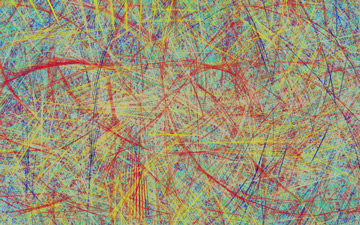
2014 – 19. till the 30th of June Germany tour. Festival in Schiphorst, Munich, "Echtzeithalle" and "Signalraum" and then 3 days of performances in the "Tresorraum" in Tübingen. Us were on the move with a full-length program, Gero Koenig and me. 2 solo pieces of me, 2 solo pieces of Gero Koenig and 2 duets. There follow different videos.
2014 - Peter Wiessenthaner and Gero Koenig - image
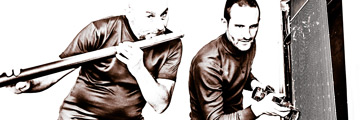
hitmachine with animation. Installation. Video. 42 filter sounds, created with MAX, generate a fine-meshed network of perkussiven sounds. Agreed and chance-steered, circle-like expiries, prove a sound pattern changing over and over again, a play without recurring pattern and freely from known tact patterns. This tutorial covers the creation of equations: mathematical statements that evaluate an expression based on input values. The key to equations in Max is the expr object, which provides a wealth of mathematical functions and a “write your own” mechanism for developing complex statements.
The multiple which are programs in PROCESSING are moved by these sounds about the screen and her colour and size are assigned to them by the movement. Here a cutting from the installation.
Programming PROCESSING: Keith O'Hara, Peter Wiessenthaner
Programming MAX: Peter Wiessenthaner
Camera: Serge Le Goff
Buy film or audio file here
2014 - Screenshot, hitmachine with animation, video
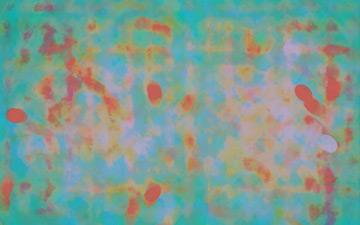
Composition for 2 bass flutes, 4 loudspeakers and animation. Video. The bass flute playing was transferred more than 2 microphones into the space. By movement before the microphones the tones were expressed and quietly, according to distance to the microphones and a movement of the tones is perceived by the space.
At the same time the movement serves before the microphones and the volume of the tones for the generation and control of a colour composition which was programmed in PROCESSING. A process is got going by constantly changing colour combinations which continues to exist only by the play. With MAX the played tones were worked on and returned on two other loudspeakers. A microsound ale tone colour network originated.
Programming PROCESSING: Keith O'Hara, Peter Wiessenthaner
Programming MAX: Peter Wiessenthaner
Camera: Serge Le Goff
Buy film or audio file here
MAX send about OSC interface data to PROCESSING - Video.
Above the OSC interface the audio-data are sent by MAX to PROCESSING. 42 filters generate a complicated-many-voiced electronic music whose data steer a programming in PROCESSING. Without external intervention the music generates a constantly changing colour play.
2014 - hitmachine, video
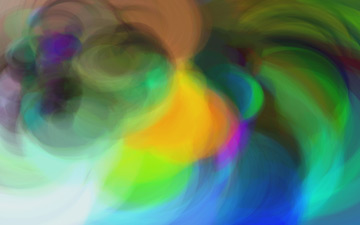
Enlargement of the flute collection - Image
Piccolo flute with sliding-pipe. Big Floee with verchiedenen sliding-pipes and with passed away to punched pipes and gedackte pipes. Old flute with sliding-pipe, punched pipe and gedacktem sliding-pipe. Bass flute 2 with sliding-pipe, easy pipes and punched pipe. Bass flute 1 with an easy pipe (is still extended). From the 14th of February to the 16th of February, 2014 test with this flute collection in Cologne with Gero Koenig and his instrument, Chordeograph. From this cooperation arose the need to extend my flute collection. Now the whole spectrum of the Chordeograph tones is covered with it and by the sliding-pipes new formative possibilities arose for my play and the teamwork.
2014 - Flute collection image
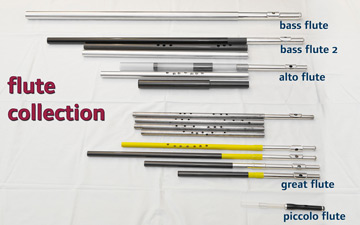
2013 - hitmachine and composers's duo with Gero Koenig in Frankfurt and Cracow. Intensification of the work with MAX and PROCESSING.
PDF to our cooperation.COMPOSER'S DUO Gero Koenig and Peter Wiessenthaner.
Buy film or audio file here
2013 - Screenshot: colored circles move, concert in Frankfurt und Krakau, video
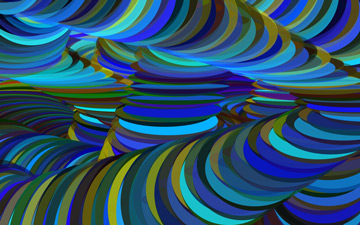
2013 – The teamwork with Gero Koenig develops.
During the last months different works originated for the Internet. Substantially for this audio visuell works it is: The play of the tones generates pictures. No visual representation disposed however of tones. Example: colored circles move. A change of animation and music, produces with MAX and PROCESSING. Also with these programes originated: five objects with drums-like impulses and five circularites by line formations.
Only with MAX the following works have originated: colored stripes, points and areas II, colored stripes, points and areas I, in these works the timbre and the amplitude of the sounds steers the colour, the lines, briefly the forming of the colour play. Two works originated as a pure animation, without music: busy streaks and color areas and stripes animated and coloured.
Video with Peter Wiessenthaner, preserved transverse flutes and Gero Koenig, Chodeograph 2, in Cologne.
Buy film or audio file here
2012 – bamboo – Composition for specially constructed transverse flute, Monochord, 4-string bass instrument, rhythm box, video, PC and 6 loud speakers with subwoofer. Performance: 24th May 2012 at Acousmain, Frankfurt/Main – Germany. Photos of the stage 1, 2, 3 and 4. The played notes had been recorded by microphones, emitted by loudspeakers and simultaneously arranged and replayed by MAX. Each loudspeaker had been given a distinctive range of sound. Videos and single pictures navigated in several ways the loudness of the tones. Two videos were merged in respect to tempi, colourful- and lightness by loudness and determined volume, highlighting for a short period of time single pictures. The videos were created from several single photos, taken in a bamboo forest. These photos were abstracted to vertical movements by retaining the vision of space. The single photos have been animated into videos. These videos are subject to complex live-sequence during performance. The play of tones changes the videos towards abstract pictures, where only two-dimensional space and colourness is of importance.
The live-performance lasted ca. 50 minutes; the documentation – video – has approx. 15 min. of length.
Buy film or audio file here
2012 - bamboo
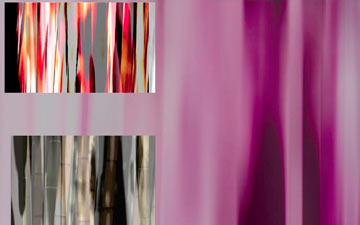
2011 – New instruments – As the play of the transverse flute is limited to a defined range of sound, I felt the need for an extension of the klanglich-tonlichen –tonal and sound possibilities in particular to playing chords. And then, end of 2010 the first result by creating a 7-string bass-instrument, equipped with special 220 cm long bass-strings. This instrument was played for the first time in November 26th 2010. It was extended by using MAX to work on each tone and thereafter to be implemented into the live-concert. The 7-string instrument proved to be too clumsy and thus was subsequently reduced to 4 strings showing the required result of ease of playability. The enhanced version of the instrument was first performed on 28th May 2011. See SKOP-Veranstaltung “Musikmarathon mit Roland Graeter” (SKOP-concert called “Music marathon with Roland Graeter). Soon a sequence of this concert will be available on this side. Here the predominate instruments I played during this concert. Image.
Buy film or audio file here
2011 - played with new bass string instrument - large image
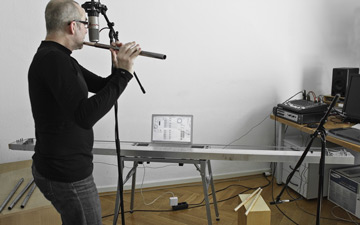
Project Teamwork began with Peter Fodoroff in 1993. Duet play for preserved tenor horn and preserved transverse flutes and alto transverse flute. We played together up to the death of Peter Fjodoroff nearly 20 years in this occupation. The hole flutes originated in summer, 1992 and were played first with the first event by SKOP in 1993, in the foundation year of SKOP, an event organisation in an interdisciplinary frame events organised.
1992 - Flute collection, with holes, - large image
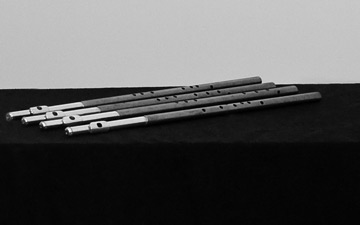
2010 – “Meer – Die Erde ist rund” (“Ocean – the earth is round”) – I used a special technique to take pictures of the ocean. The individual photos had been grouped together to form panorama pictures. The human perception had been the guidelines for these photos. A second series of pictures was extremely artificial. The pictures – manipulated by a special technique – were transformed into round pictures, highlighting the symmetric character of the circle. The music being on one side a stand-along element remains still as part of the pictures. Both form a synergy. The picture show is presented in a double projection modus. The two projections levels and the development at each level is set in relation to each other contrapuntal.
Quoting contrapunctal we finally arrive at the music. Several elements – a production created at Rotterdam Worm-Studio in 2009 – are the starting point for the music. These materials, tones from the transverse flute and drum, which have been composed in small self-contained parts, had been re-arranged and contrapunctal newly composed sequences, played with a E-guitar, have been included. Of importance had been the full-artikulation of the transverse flute and drum tones, meaning that each element of the artikulation such as tone heights, intense of tone, lengths of tone, beginning and ending of tone, tone development, tone colour and tone volume have been each addressed during the play. The musician focuses during the play on one or two elements of the tone structure. The music recites in the background and enfolds there its strength.
E-guitar: Christiph Korn
Transvers flute, drum, composition Pc and Mix: Peter Wiessenthaner
Multi-Media Show: Peter Wiessenthaner
Buy film or audio file here
2009 – “Stadtansichten Berlin 2009” (Faces of Berlin 2009) – Photos of the architecture of 3 different streets had been taken each with a wide-angle and a telephoto lens with a determined focal length. Thus the viewer is able to experience the physical condition. The pictures are at the same time overview and detail. The photos had been divided in several parts.
Simultaneously to the pictures music can be heart. The show is presented in dual-projection.
The original version is composed for 2 musicians and 2 beamer. The premier took place in Frankfurt / Main on 12th December 2009. Along with the Internet photo-show music composed at WORM-Studio in 2009 can be heard. Views of Berlin 2009.
Buy film or audio file here
2009 – “Projekt Zusammenspiel” (“Playing together”) – with Peter Fjodoroff (specially constructed Tenor horn and Peter Wiessenthaner, specially constructed transverse flute. Resulting from similar interested in compositions the project “Zusammenspiel” (playing together) had been put alive. Since the year 1000 music continuously developed achieving a high degree of complexity nowadays. This process will continue. We see ourselves not only as the descendant of twelve-tone-, the serial or the coincidence music…. "Stadtansichten Berlin 2009".
Buy film or audio file here
2009 - Stay at WORM-Studio, Rotterdam. Recording for a radio play.
2008 – “Farben und Töne” (“colours and tones”) – Peter Wiessenthaner. Had it been in the past spaces of colour (Farbflächen) corresponding with music, the main emphasize this time had been on architecture and details of architecture and landscape. Base were pictures taken by Peter Wiessenthaner in the South of France. Accompanying his pictures Peter plays his specially constructed transverse flute. Important for the play is that single tones of the composition frequently slightly vary in its tone heights leaving the impression the music would remain still on a constant tone heights level in midst of tone-weaves. However a space of tone is constantly passed through by many octaves.
Each tone is completely articulated, meaning they can receive simultaneously changes in loudness, colour of tone, heights, volume and articulation.
2007 – The SKOP-Trio plays in this setting several times. Transverse flute, specially constructed e-guitar and drums are the starting points for the compositional play with tones. At the studio a method of play had been created which could not be performed live, thus it was included in the live-performance via loudspeaker.
2006 – Combinations of tone and colour. Variable colour panels in connection with tone combinations had been created on PC had been put in relation to each other. Based on generalized principals the work with colours and tones developed and had been specifically utilized in each media.
The SKOP-Trio:
Drums: Wolfgang Wuesteney,
Ebow-guitar: Christoph Korn,
and transverse flute: Peter Wiessenthaner.
Performaces: April and December 2006. Before each performance guitar- and drum tones had been recorded in a studio by applying a special method. The recording had been put together in a pre-recording. During performance a possible final version was developed.
2005 - "Vertikale" - computerpaintings with music. Load video complett, about 1 minute.
2004 - 6 lectures, "Qualtitiy of sound and time in music". He is interested in this problem for about 25 years.
Different compositions with prepared flutes (side-blown flutes), alto flute, percussion and computer - without notation.
Internet-media-shows - "cityview" and "situation".
Magdalena Ising and Peter Wiessenthaner - painting and music.
2003 - "Playing together" - duet with Peter Fjodoroff - prepared althorn, Peter Wiessenthaner - prepared flutes. We work together since 13 years, and we don't play in a temperament system trying to show different qualities of sound in our music. QuickTimeShow with MP3. "One-minute-pieces"; in the future mp3-files.
Multi media performance with prepared flutes, alto flute, percussion, live electronic, computer and video.
Internet-media-shows.
Buy film or audio file here
2002 - Duet with Peter Fjodoroff - "Playing together".
Multi media perfomance with prepared flutes, alto flute, pecussion, live-electronic, paintings and video.
2000 - "Playing together" - Duet with Peter Fjodoroff.
Composition with prepared flutes, alto flute, percussion and computer.
1999 - Composition with computer - using two sounds of "Livre d'orgue" by Messiaen. My work included an intense occopation with Messiaen's compositional principials.
"Playing together" - Duet with Peter Fjodoroff.
Overhead-projection: oil-paintings of acryl-plates (21cm x 21cm), prepared flutes.
Using alto flute as accompanying instrument to - "images and music" (composition of Phill Niblock).
Lecture: "Elements and construction of sound".
1998 - "Playing together" - Duet with Peter Fjodoroff.
SKOP-Trio: Peter Wiessenthaner, prepared flutes; Dirk Marwedel, preparad saxophon and Ulrich Phillipp, contrabass.
Live installation: oil-paintings on acry-plates (14,5 cm x 28,5 cm) and oil-paintings on windscreen (ca. 160 cm x 65 cm), overhead-projection, prepared flutes and live-electronic.
1997 - Sounds with prepared flutes, voice and live-tape with to channels.
Lecture: Rooms of possibility and probabilitiy in playing improvised music without notation - a presentation of toughts.
Lecture: "The musical sound and his elements" - part 3.
"Playing together" - Duet with Peter Fjodoroff.
SKOP-Trio with Dirk Marwedel and Ulrich Phillipp.
1996 - Painting/film - Oil-paintings of acryl-plates, overhead-projection, 16mm film.
Lecture: "The musical sound and his elements" - part 2.
Sounds with prepared flutes, voice and live-tape with two channels.
Sounds with prepared flutes, voice and live-tape with 8 channels and four loudspeakers.
"Playing together" - Duet with Peter Fjodoroff.
SKOP-Trio: Peter Wiessenthaner, prepared flutes; Dirk Marwedel, prepared saxophon and Ulrich Phillipp, contrabass.
Using alto flute as accompanying instrument to - "images and music" (composition of Phill Niblock).
1995 - Sounds with prepared flutes, voice and live-tape with to channels.
"Playing together" - Duet with Peter Fjodoroff.
SKOP-Trio with Peter Wiessenthaner, prepared flutes; Dirk Marwedel, prepared saxophon and Ulrich Phillipp, contrabass.
"Projection-reflection": installation with paintings on glas, acrylgals and aluminium.
1994 - Sounds with grand piano and tape.
"The time at the same time": live-installation by Marcel Post and Peter Wiessenthaner; conception: Peter Wiessenthaner.
Live-electronic-music, processing tapes by Joerg Grundhoeffer and Peter Wiessenthaner, conzeption: Peter Wiessenthaner.
"Playing together" - Duet with Peter Fjodoroff.
Lecture: "Music and language" - specific problems with regard to the forming of sounds.
1993 - Live radio-play (Joerg Grundhoeffer, Alexander Heidgen, Robert Harnischmacher, Peter Wiessenthaner), conception Peter Wiessenthaner.
Lecture: "The musical sound an his elements" - part 1.
Grafics with computer.
Electro-acoustic composition with live-electronic.
"Playing together" - Duet with Peter Fjodoroff at first time in concert.
Foundation of SKOP, this organization is deeply interested in arranging events and perfomances in an interdisciplinary connection.
1992 - Playing together with Bernhard Guenter.
Composition with voices, dia-projection, live-tape.
1991 - Composition with voices, dia-projection, live-tape.
Compostion with live-tape, mixing-console, amplifier and loudspeakers.
1990 - "HoerspielHoerspiel" - radio-play for two channels
"Tonbandverarbeitung" - the material on tapes was replayed with live-bandmaschine by using loops (15 m !). We created different sound and different areas of pitch perception.
Live-radio-play - "Empedokles auf dem Aetna" by Friedrich Hoelderlin, for one Speaker and live-tape. The hole text was spoken into two microphones. The different positions in distance to the microphones was used to caracterize the different personalities.
1989 - "Tape-guide" - the material on tapes was replayed with live-bandmaschine, effect of loops and the pitch as noted above 1990.
Live radio-play - "Empedokles auf dem Aetna" of Friedrich Hoelderlin, as noted above 1990.
1988 - "Tape-guide" - the material on tapes was replayed with live-bandmaschine, effect of loops and the pitch as noted above 1990/1989.
Sounds for two and more voices and live-electronic. For many years I worked on this project in Live-radio-play - "Empedokles auf dem Aetna" of Friedrich Hoelderlin, perfomance like noted above 1990/1989.
1987 - Organization of tape-material as noted above 1988.
workshops - experimental music.
Live-radio-play - different kind of forms.
Composition for voices, viola, basson and live-tape.
1986 - Organization of tape-material as noted above 1988/1987.
Improvistion: piano, bassoon, and three flutes.
"Multiphonics and anothers", compositon for bassoon and live-tape. Result of long cooperation with Karl-Heinz Riedelbauch.
1985 - Organization of tape-material as noted above 1988/1987/1986.
Compostion for viola and live-tape.
Improvisation for voice, flute, material, violoncello and live-tape. Variation of perfomances.
1984 - Organization of tape-material as noted above 1988/1987/1986/1985.
Improvisation for four flutes.
Live-radio-play - different kind of arrangements.
1983 - "Thraenen" - composition for voice, flute, and live-electronic after a poem by Friedrich Hoelderlin.
"beckett-studies" - movements, dia-projection and live elektronic.
"Get on the track of" - for grand piano, material, dia-projection and live-electronic.
Concerning the material on tapes work as noted above.
1982 - Composition with live-tape, material on tapes, two microphones, two amplifieres and two loudspeakers.
Concerning the material on tapes I refer to my tatments noted above (i.e. 1988/87/86/85/84/83).
Playing together with Bernhard Guenter.
Beginning of works with Hoelderlin poems. This project will ending in 1991.
I demonstrate my work in: New York, Bogotá, Toronto, Berlin, Hamburg, Gent, Muenchen, Frankfurt, Kassel, Darmstadt, Schiphorst, Krakau, Tuebingen, Rotterdam...
All this is "work in progress" an will leave ample room for further development.
Image, audio files, videos or multimedia files can be purchased via PayPal.
Order via this email address: p e t e r (a t) w i e s s e n t h a n e r (d o t) d e
Imprint
